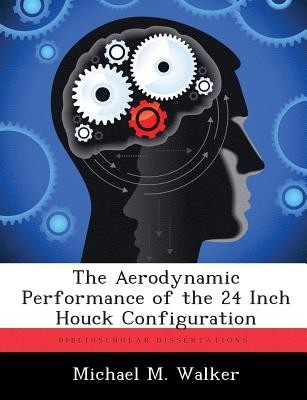
- We will send in 10–14 business days.
- Author: Michael M Walker
- Publisher: BiblioScholar
- ISBN-10: 1288332556
- ISBN-13: 9781288332557
- Format: 18.9 x 24.6 x 0.8 cm, minkšti viršeliai
- Language: English
- SAVE -10% with code: EXTRA
The Aerodynamic Performance of the 24 Inch Houck Configuration (e-book) (used book) | bookbook.eu
Reviews
Description
Fuel efficiency of aircraft is of great importance to the military and private sector. A more efficient wing design for UAVs would lead to improvements in mission support while reducing fuel costs for the Air Force. An experimental investigation of one candidate design, the Houck Aircraft Configuration, has been conducted in the AFIT low speed wind tunnel. This aircraft shares similarities to other joined-wing aircraft, but includes curved flow-guides of varying spanwise camber connecting the upper and lower wingtips. Experimental results show that the addition of flow guides on the 24" Houck Configuration results in a 2.5% reduction in L/Dmax at Re H 80K and a 0.3% reduction in L/Dmax at Re H 125K. This trend shows a decrease in the performance gap as the Reynolds number increases from 80K to 125K. It is recommended that additional testing at higher Reynolds numbers be performed to determine if an increase in performance can be shown. The designed flow guides proved to be successful in combining the upper and lower wing-tip vortices into a single vortex. The flow guides alter what would be two smaller compact vortices and instead produce a slightly larger, spread out vortex which follows the curve of the flow guide. Ultimately, evidence of improvements in aerodynamic efficiency will need to be shown before other claims of the design are demonstrated to be fully successful.
EXTRA 10 % discount with code: EXTRA
The promotion ends in 22d.17:22:41
The discount code is valid when purchasing from 10 €. Discounts do not stack.
- Author: Michael M Walker
- Publisher: BiblioScholar
- ISBN-10: 1288332556
- ISBN-13: 9781288332557
- Format: 18.9 x 24.6 x 0.8 cm, minkšti viršeliai
- Language: English English
Fuel efficiency of aircraft is of great importance to the military and private sector. A more efficient wing design for UAVs would lead to improvements in mission support while reducing fuel costs for the Air Force. An experimental investigation of one candidate design, the Houck Aircraft Configuration, has been conducted in the AFIT low speed wind tunnel. This aircraft shares similarities to other joined-wing aircraft, but includes curved flow-guides of varying spanwise camber connecting the upper and lower wingtips. Experimental results show that the addition of flow guides on the 24" Houck Configuration results in a 2.5% reduction in L/Dmax at Re H 80K and a 0.3% reduction in L/Dmax at Re H 125K. This trend shows a decrease in the performance gap as the Reynolds number increases from 80K to 125K. It is recommended that additional testing at higher Reynolds numbers be performed to determine if an increase in performance can be shown. The designed flow guides proved to be successful in combining the upper and lower wing-tip vortices into a single vortex. The flow guides alter what would be two smaller compact vortices and instead produce a slightly larger, spread out vortex which follows the curve of the flow guide. Ultimately, evidence of improvements in aerodynamic efficiency will need to be shown before other claims of the design are demonstrated to be fully successful.


Reviews